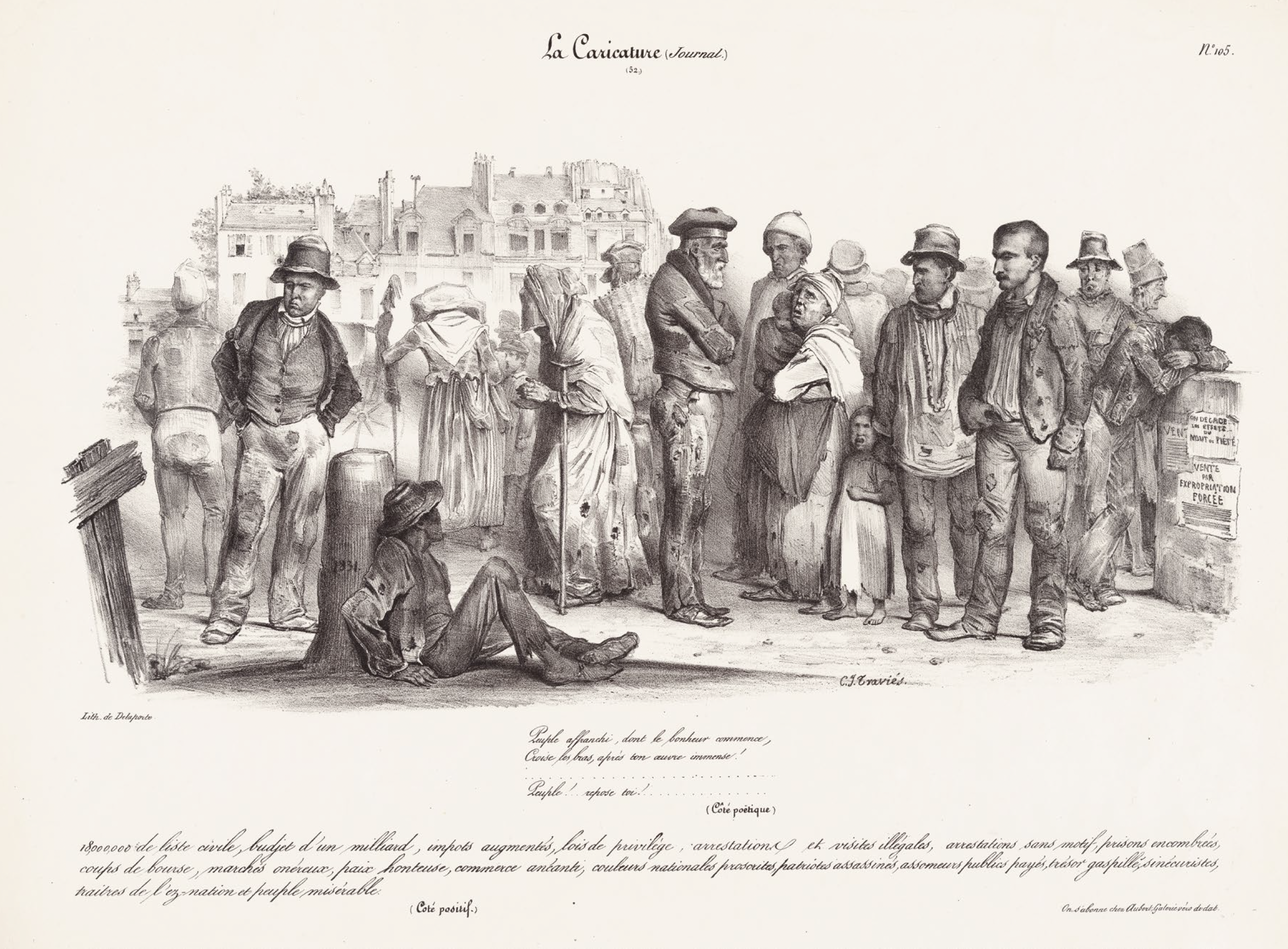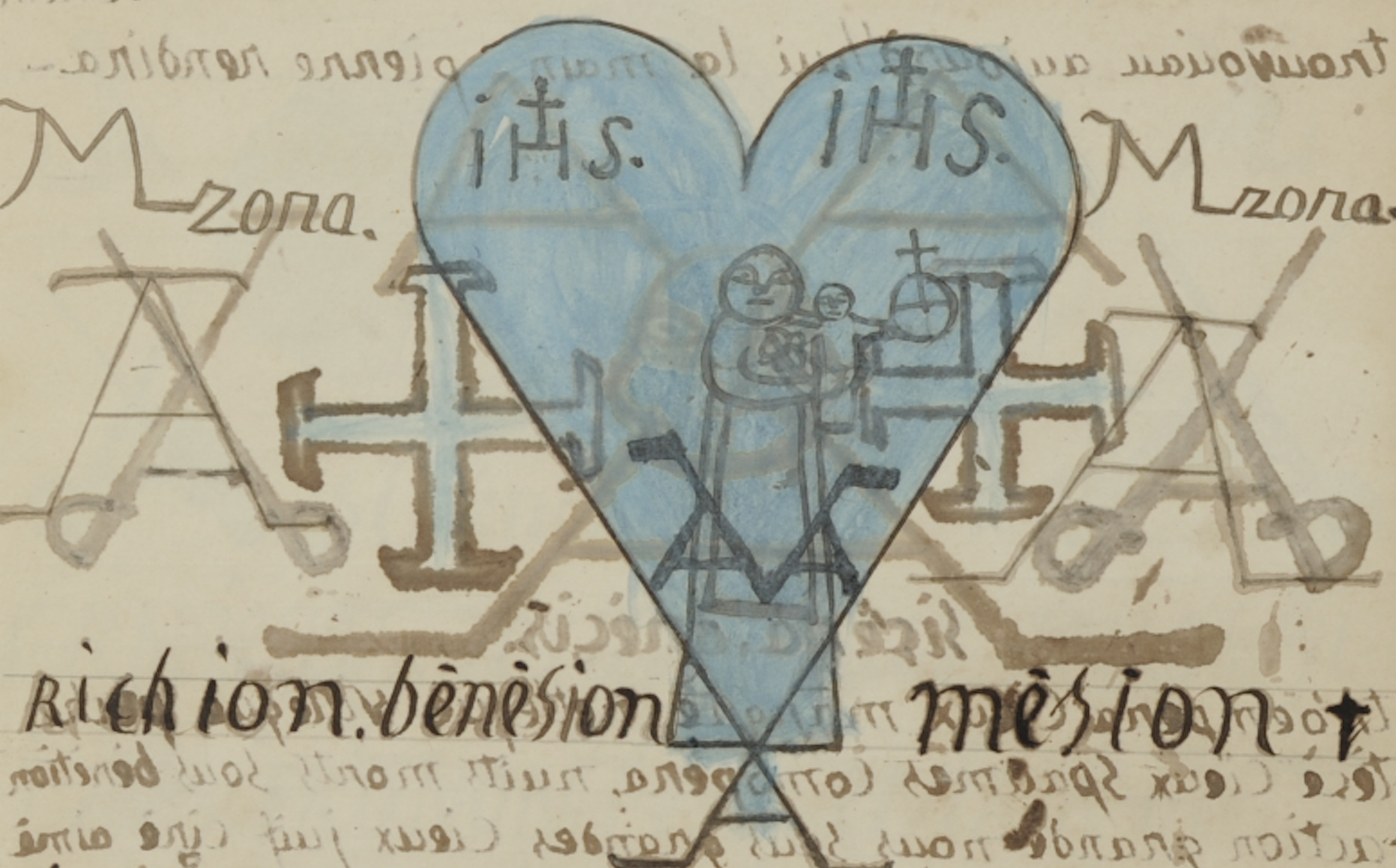Susan Turcot]
[June 3, 2007
Some notes on the ACRE series of pencil drawing
28 drawings made during a residency in Acre, Brazil as part of my invitation to the 27th Sao Paolo Bienal, ‘How to live together’.
Drawing as reportage:
I have tried to merge historical, environmental, anthropological research with my own experience of rituals, exchanges, and travel during my residency in Acre. This series does not capture or record situations in the present, rather, they have been distilled out of the Acrean experiences and have evolved through the drawing process resulting in a series of symbolic pictures.
Subjects:
I’m interested in the reasons behind the destruction of the great forest bodies and in the groups who fight against this both in the Amazon and the Boreal forests. The forests are our planets breathing organs, and are areas of abundant ecological diversity and home to many forest communities. They are being measured, fought for, and destroyed simultaneously.
In Brazil the forest is still home to isolated indigenous communities, and large networks of rubber tapper and river communities, They could maintain their social and ecological balance were it not for soya, timber, and beef markets coupled by the disastrous effects of global warming, which include significant fires each year. The enforced perpetuity of foreign debt has kept Brazil making decisions that benefit first world countries and promote corruption at home. Whole populations have been abused with promises of land independence as they were shifted during the eighties to this part of the Northwest Amazon to burn forests or work in debt economies for the rubber barons, resulting also in the decimation of indigenous communities.
Presently in the less destroyed parts of the Amazon many groups are asserting their rights and finding ways to fortify their communities and make sustainable and independent economies within their borders. This process is fragile as multinational thieves are yanking out the threads in its delicate fabric. Road building through the forest may eventually advance wealth and commerce but ultimately it will lead to the end of the forest body and its communities. The Amazons river roads serve the populations well but are not up to speed for the soya giants.
Inside the Amazon are also, despite all the interruptions, tribes who continue to live in a separate time/space connected to a cosmogony woven into thousand of years of their forest culture and identity. Their patterns of living, and real and mythical inhabitations of other layers above and below the earths surface were an important part of the research.
Although the state of Acre would have been considered, until recently, a final frontier it is now been catapulted into the future as the beholder of the last patch of highly desirable bio- diverse forest. The forest frontier is presently de-frontiering by having a road poured onto it that will connect the Atlantic to the pacific and will inevitably invite several tributary roads for timber economies.
Bio- piracy and continuous flows of ‘researchers’ makes for many uninvited guests which communities are having to protect themselves from. I’m interested in the urgency with which GPS measuring and satellite map reading are being taught to all the forest communities. This ability increases awareness and autonomy of their territory and it enables the protection and the defence of their land rights. Some isolated and traditional indigenous communities have computers running from solar energy which allows them to access daily satellite imagery. Although they have lived through the millennia’s skilled at following their own patterns born out of their complex environments, their new systems/products are born out of the most advanced military technologies. This inevitably means that autonomy is conducted through a dependency on the systems, which are external to internal forest logics.
The result of the residency and the intense drawing period that followed was an ability to enter into my experiences and explore them within the time of drawing. Meetings, rituals, and people which one can only half absorb at the time they happen become retraceable on several levels in the drawing. In the ACRE series I found I wanted to communicate both a social history as well as the powerful personal experiences inspired by the people who encouraged new ways of seeing in both the visible and invisible realm.
18 from 28 drawing with comments particular to their content.
sombrio
0349
The real and present horror of forest slaughter for soya farms. There are several multinational companies behind this global trade, most EU and much of American livestock is fed on Brazilian soya.
Casa
0344 Many forest houses, community centres and schools are built without walls. I was thinking about encasement-of walls within walls and within vehicles and how radical a proposal wall-less houses would be to the rest of the world. Many indigenous drawings show an opening in the landscape where the trees or vegetation are seen as growing outward from the scene as if it was been held.
Travel layers
Through anthropology books and with an outsiders experience of some forest rituals I am drawn to interpretations which locate our earth experience as a thin stage between many others. Differently to Judo-Christian understandings, these others stages are not projections for afterlife, they are part of daily life and reflect the changing dynamics and histories in a variety of symbolic ways.
How to live together:
The title of the 27th Sao Paolo biennale. This drawing describes the experience of a ritual where people of all ages, circle, move, react, (male outer ring female inner) to live music doing work connected to their spiritual health. The inward focus leads to the expelling and receiving of spirit through quite expressive body language carried out over many hours. Unlike performance or spectacle it takes place in the tightly knit circles of a community who meet primarily for this work, then for the pleasure of shared experience after the ceremony is over.
BR364
This forest-dividing road was built with the intention of off-loading a large part of the north-eastern and southern population to the Amazon. Their instructions were to burn down the forest and grow coffee, which was largely unsuccessful. The experience resulted in disease and land loss while death, sickness and loss of territory was the result for the indigenous populations.
Frontier end
Civilisations moving forward on increasingly parched surfaces
Empate
Empates were a form of non- violent resistance by the rubber tappers, in which whole communities circled the men with chainsaws. They were released after signing documents protecting the trees. These peaceful protests were quite successful until Chico Mendes and other rubber tappers were murdered by local farmers.
New cover layer
Under every cow and soya farm is the history of murder, illegal property invasion and forest death.
Croa 2
A forest service under a roof, which became several roofs
Prophet
A katukina indian tells me of the paje or shaman singing from the treetop at night.
Healing is done in layers above the sky. The tree reversal and bodies on the forest
floor are connecting a past with a present form.
knowledge exchange
The highest level of teachers and knowledge for the shaman come from the plants.
Part of the shamans training is to learn the language of the plants and be able to communicate with it. To attain their language and manifest their powers takes particular transformations. The geometrical forms are conceptualised mappings for the interconnected life forms.
Independence
The state of Acre is shaped like a pair of wings. It was initially annexed to Bolivia but was won over to Brazil after a battle and a small price at the turn of the century. The state has an independent and autonomous identity and is again been challenged by resource and territorial disputes.
Quemada (fire)
The fires in the dry season are becoming more and more disastrous; they are usually the consequence of a farmer burning his field when it is too dry. Last year there was an economic loss of 50 million dollars. An insignificant amount of fire fighters are brought in from Brasilia to fight the fires with water knapsacks and long sticks with rubber flaps to beat out the ground flames.
Urban
The great physical and mental divide between forest and urban environments despite their physical proximity. Keeping the urban masses disconnected from the forest has beneficial political ends.
Tessada
Portuguese for weaving; indigenous patterns carry history identity and communal knowledge. Depicted in this drawing not as appropriation but as a way of documenting a perception of the force these conceptual signs carry. In acre, some groups are trying to protect the patterns legally before they are junked by the meaningless mass reproduction for the ethnic t-shirt trend.
GPS
Global positioning systems: The most currently taught method of protecting territory for forest communities. This drawing shows a satellite to ground connection with a barely visible individual holding the measuring device.
Unfixed
Taken from a satellite map of a populated part of Acre showing the fishbone effect growing out of the main roads. These traces of movement, which break into the forest, are in flux and always growing.
Rio Branco
A teacher working in Rio Branco told me that there is theoretically one bus that could be used to take children to the forest. She had not been able to access it in four years. Although the city is in the middle of the forest the children learn about the forest through books and magazines. There is no rural exchange or public transport to the forest which is one hour away, The government promotes itself as been the” governo da foresta” and the forest image is mediated everywhere in the capital Rio Branco.




















